#different purposes and both are dimensional characters with depth. but I digress)
Explore tagged Tumblr posts
Text
For all Bertel Bäck’s sleaze and greasiness I do really enjoy that he’s a genuine friend to Dan-Ole and wants the best for him. It would’ve been really easy to make him a subpar friend who barely tolerates Dan-Ole but they’re clearly actually close and it’s very nice to see they went for him being three- rather than two-dimensional
#good friend in addition to sleazy and gambling addict I would say are the three dimensions#there’s more to him but those are the main elevator pitch traits#maybe it’s because he reminds me the most of ted spankoffski from hatchetfield of all fictional characters#and Ted is way more awful than Bertel so Bertel feels very refreshing#(and like. ted Shouldn’t be more like Bertel. to be clear. they are very different characters who are written both very well and serve#different purposes and both are dimensional characters with depth. but I digress)#og#kaj#botnia paradise#bertel bäck
72 notes
·
View notes
Text
Space
How do we see space? As we move through the world we move through a volumetric space through time. 3D works occupy actual physical space. Architecture encloses actual space. A photograph can only hint to the spectacular feeling of space and volume.
How do we perceive space on a two dimensional surface? Here space is an illusion, for the images rendered on paper, canvas, digitally, etc. are essentially flat on the picture plane. Sometimes this flat picture plane can appear to be a “window” into space.
In thinking about the previous Line assignment, a horizontal or vertical line can create space while a diagonal line is probably the easiest way to create depth on a flat 2D surface.

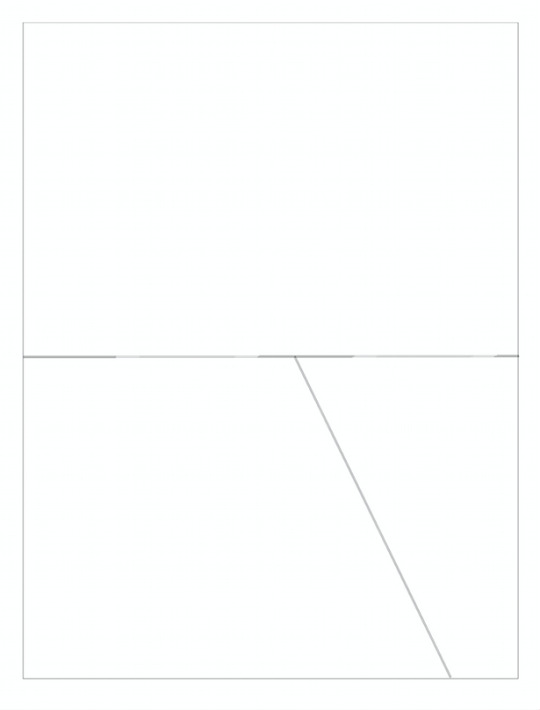
Ways to explore space:
Overlapping: When one object is positioned in front of another object, blocking its full view; this is called overlapping. The overlapping creates the illusion of space.
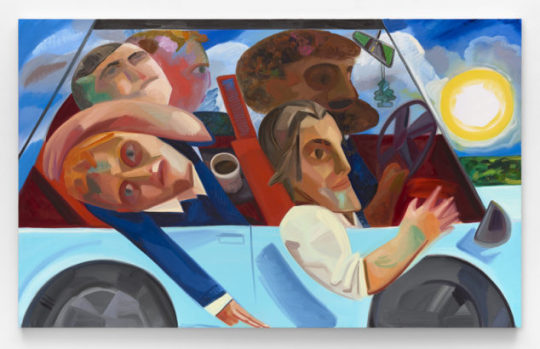
There is no difference in the size of the figures, but we understand their respective positions establish a sense of depth.
Dana Schutz


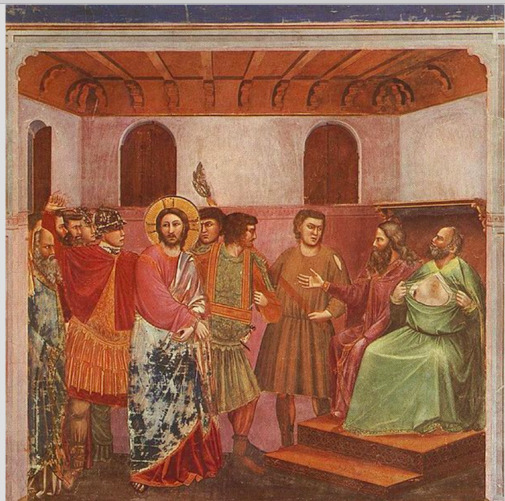
Position in the Field: Where things are positioned in the field of view also create space. Generally, objects that are positioned lower on the picture plane will appear closer than objects that are positioned higher on the picture plane.
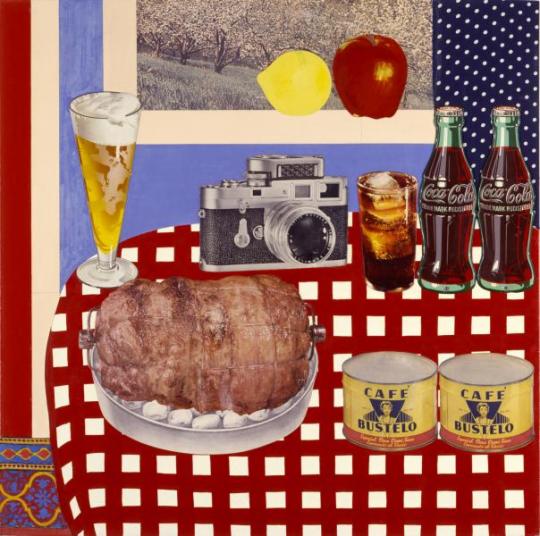
Tom Wesselmann, Still Life #12

Image above: Nancy Gail Ring, Souls 2010
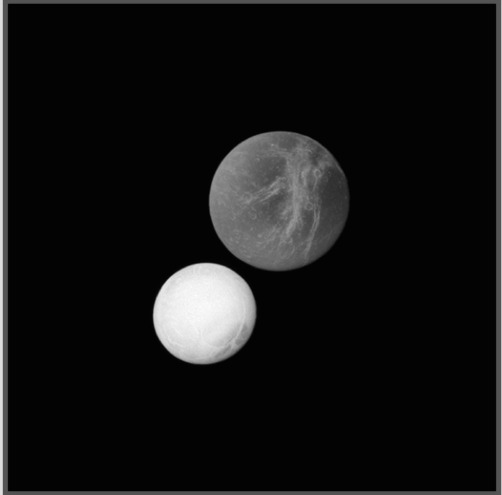
Size: The range in size of an object also creates space. Objects that are closer to a viewer appear larger than objects that are further off in the distance - this is something that we learn very early on in life.
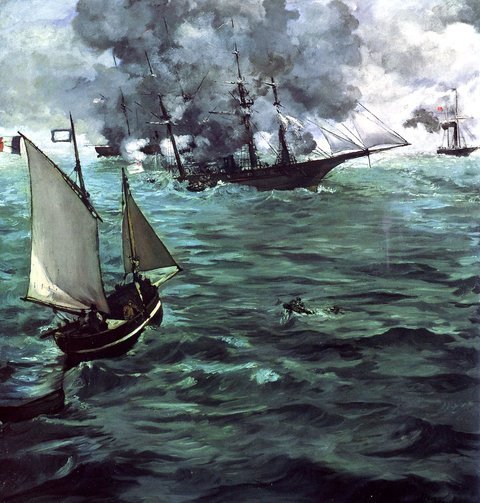
Edouard Manet
Immediately we see the relative sizes of various elements and understand space is suggested. This flat picture plane becomes a window through which we see a 3D scene.

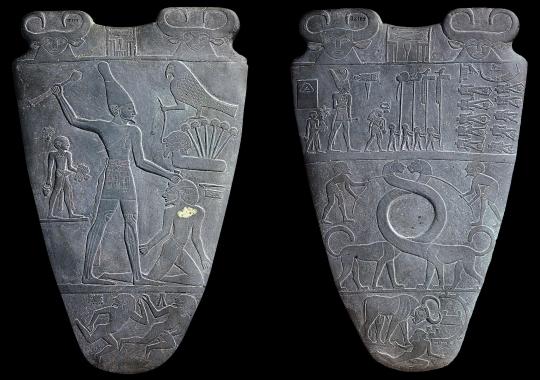
Narmer Palette
Hieratic Scaling: Size historically has been sed to denote some conceptual importance rather than to dictate spacial depth.
Amplified Perspective/Foreshortening: Amplified perspective is used to create a dramatic, dynamic quality. This occurs when an element of the composition is pointed directly at the viewer. The amplified area becomes the most eye-catching area of the composition. Everything else seems to recede immediately.

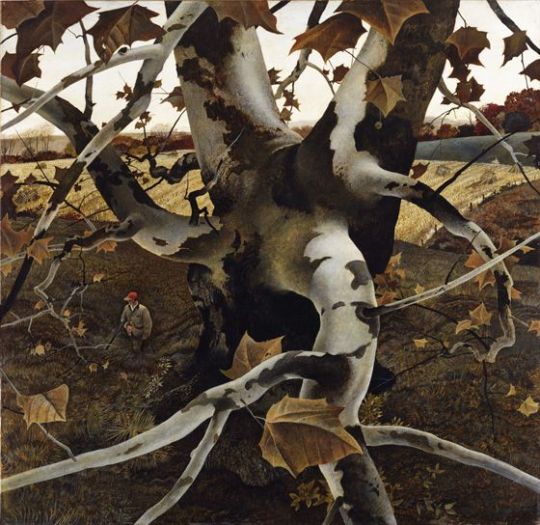
Andrew Wyeth
Linear Perspective: Linear perspective is a complex spatial system based on a relatively simple visual phenomenon. As parallel lines recede, they appear to converge and meet on a n imaginary line called the horizon (or eye level). Consider a road or railway tracks that stretch off into the distance. Artist during the Renaissance first introduced the idea of a vanishing point on the horizon to convey this idea on a 2D surface. This is a way artists can reproduce what the eye sees.
There are several different ways to create space using linear perspective. One-Point Perspective, Two-Point Perspective, Three-Point Perspective.
*Again, perspective as an idea and technique is a human invention. It is a technique and tool that can be used to create an incredibly realistic illusion of three-dimensional space on a two-dimensional surface. Renaissance architect Filippo Brunelleschi is credited with inventing one-point linear perspective around 1420, which revolutionized painting and paved the way for naturalistic styles to develop as the Renaissance digressed from the stylized figures of medieval art.
One-Point Perspective: a mathematical system for representing three-dimensional objects and space on a two-dimensional surface by means of intersecting lines that are drawn vertically and horizontally and that radiate toward one point on a horizon line.

Rules of perspective: true shapes, vanishing points and horizon lines In one-point perspective, surfaces that face the viewer appear as their true shape, without any distortion. They are drawn using primarily horizontal and vertical lines.

Surfaces that travel away from the viewer, on the other hand, converge towards a single ‘vanishing point‘. This is a point that is located directly in front of the viewer’s eyes, on a ‘horizon line’ (also known as an ‘eye level line’), as illustrated in the photo below (and above):
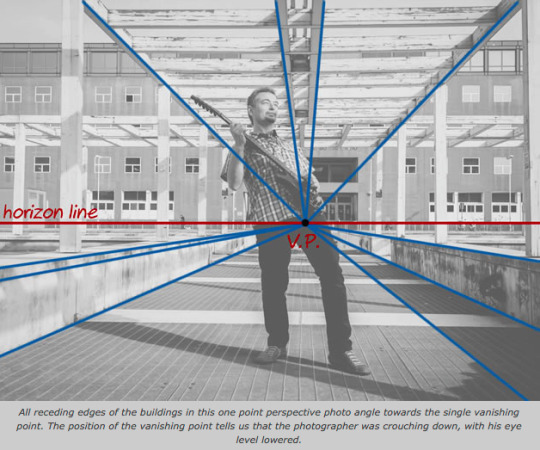
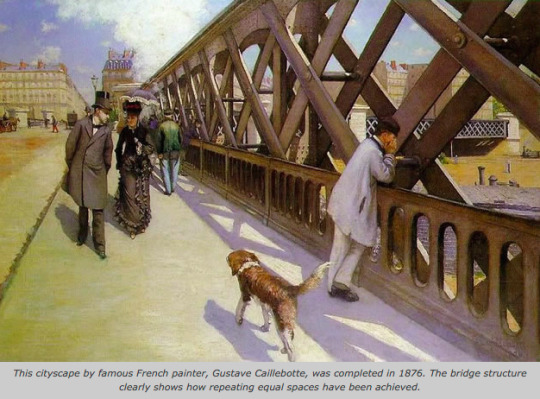

...and in photography.
Two-Point Perspective: Two-point perspective is the same definition as above except that the intersecting lines that are drawn vertically and horizontally radiate toward two points on a horizon line. This way we can “view” from an angle. This might feel more true to life.



Three-Point (Multipoint) Perspective: This type of perspective usually shows three sides of object (generally from above or below). Three-point perspective has three vanishing points (a third from above or below). This type of perspective usually shows three sides of object. This is useful to suggest ideas of height.

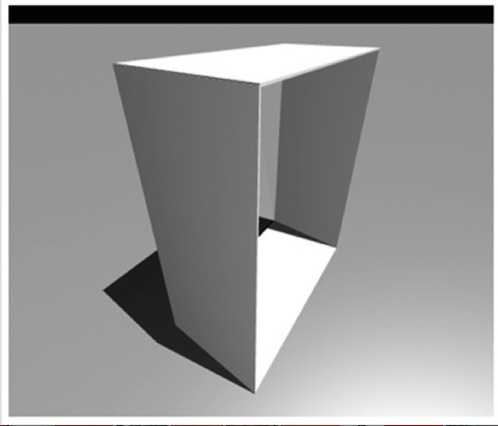
Atmospheric Perspective: Space is created through the change of value (light and dark) to show depth. As the value decreases toward the horizon line the illusion of space is created. This also creates a contrast in the composition.


This can occur graphically or photographically

Atmospheric perspective can also give the viewer a sense that they are floating or not help down by gravity.

Similarly, Depth of Field: (DOF), also called focus range or effective focus range, is the distance between the nearest and farthest objects in a scene that appear acceptably sharp in an image. Although a lens can precisely focus at only one distance at a time, the decrease in sharpness is gradual on each side of the focused distance, so that within the DOF, the unsharpness is imperceptible under normal viewing conditions.

The change in focus creates space.
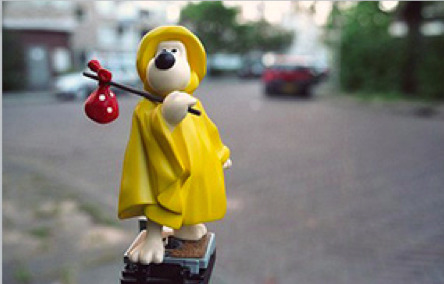
The area in focus can occur in the foreground....

....or in the background.

Equivocal Space: When two forms overlap and both are seen completely and This type of perspective usually shows three sides of object transparency is assumed. Spatial interest is increased by using transparency in many places so that forms can get interpreted (what is on top or behind) rather than the obstructions found with overlapping.
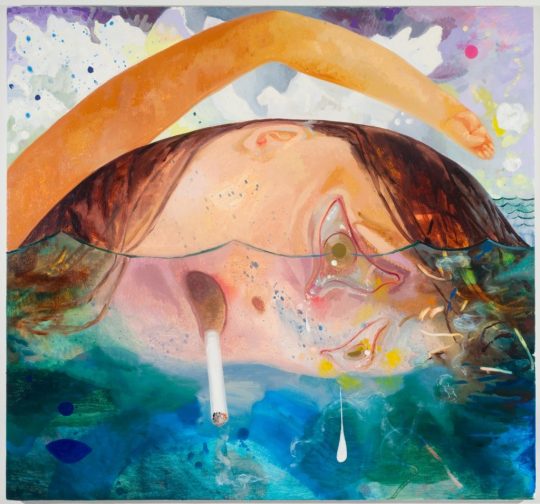
Dana Schutz

Andy Warhol
SPACE PROJECT
For this lesson your classroom practice will be instrumental in producing your homework project. In class we will do a digital story boarding assignment. Your class work will then be analyzed and translated into a Triptych homework project.
Creating Space Story Boarding Classwork
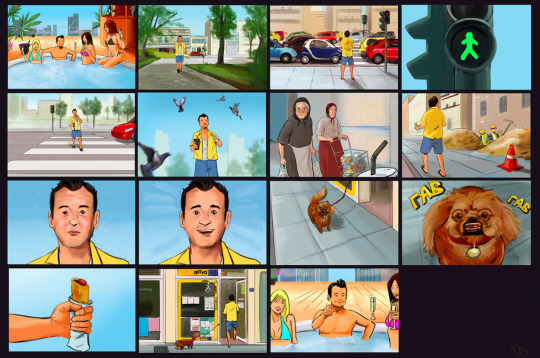
A storyboard is a graphic organizer in the form of illustrations or images displayed in sequence for the purpose of pre-visualizing a motion picture, animation, motion graphic or interactive media sequence. For the purposes of this class your story board will be used to create your Triptych homework project.
For todays classwork you are to conceive of a story or narrative. The visual progression of your story will be explored through the story boarding process. You can be an original story OR you can choose to re-tell an existing story. You must adjust your narrative so that you limit the story to SIX spaces.
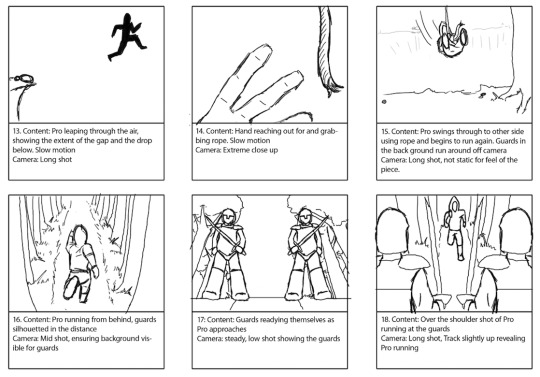

In order to maximize your story and tailor it to this assignment you will need to potentially edit your story down - perhaps zoom in on one situation from the story. Each particular story board must also specifically apply one of the space creating techniques discussed in class from the above. You are to work out the story board options digitally using Illustrator. You must post each storyboard and describe what type of space you are intending to create.
As the artist you have complete and total control of all aspects of the story; the story line, characters, scenery, location, and events. If you are retelling a story that already exists in graphic, comic, animation or film form you can not copy or replicate any characters invented by another artist. This means that if you are telling part of Disney’s Frozen you can not have a character that looks like Elsa.
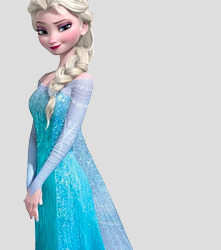
You will have to invent your own character.
Homework: Space Triptych Project
For the homework you are to re-imagine your narrative story board so that the main gist of the story is expressed in three still images (panels). Make sure you apply your space techniques into this project (this project is about space!). All three panels must be 50/50 digital to hand-ons and mounted on bristol. You must kill the white of your composition - fill your entire compositions. Finished work will be turned in for class critique and also posted to your blog.
No text: How do you convey a story through only image?
In order to understand the homework we first need to take a look at the definition of a triptych.
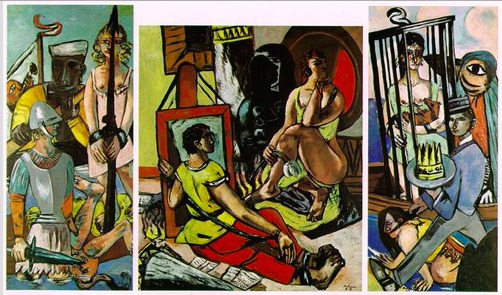
Max Beckmann, Triptych of the Temptation of St. Anthony,1937, Oil on Canvas
A triptych: is a work of art (usually a panel painting) that is divided into three sections, or three carved panels which are hinged together and can be folded shut or displayed open. It is therefore a type of polytych, the term for all multi-panel works. The middle panel is typically the largest and it is flanked by two smaller related works, although there are triptychs of equal-sized panels.
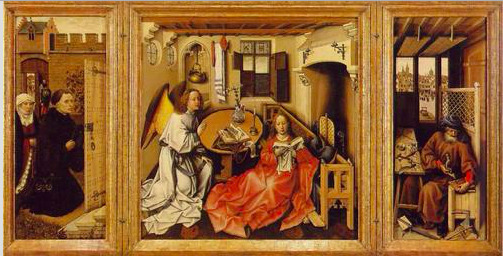
Robert Campin, and assistant, The Annunciation Triptych (Merode Triptych), Metropolitan Museum of Art, New York, about 1625-30
The triptych form began in early Christian art, and was a popular standard altar painting format from the Middle Ages onward, both in Europe and elsewhere, altarpieces in churches and cathedrals were often in triptych form. Renaissance painters such as Hieronymus Bosch used the triptych form.
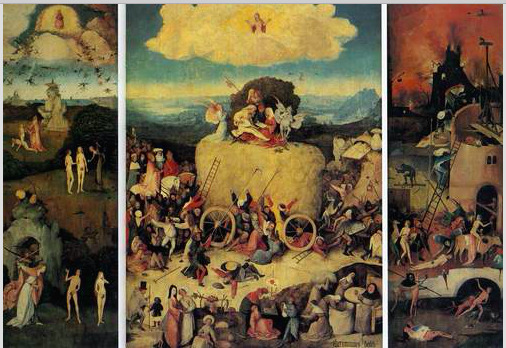
Heronimus Bosch, The Haywain, Oil on wood 135 x 190 cm Museo del Prado, Madrid, Spain
Although strongly identified as an altarpiece form, triptychs have been also been created by Max Beckmann, and Francis Bacon among others. Modern triptych works have typically been developed as three separate pieces that work together. Modern artists have also altered the triptych by making all panels equal in size.
I would like you all to follow the modern version of the triptych format and make each panel a separate piece (do not connect them). You will need to decide how your triptych will function, will it be three equal size works or will sizes vary depending on your story.
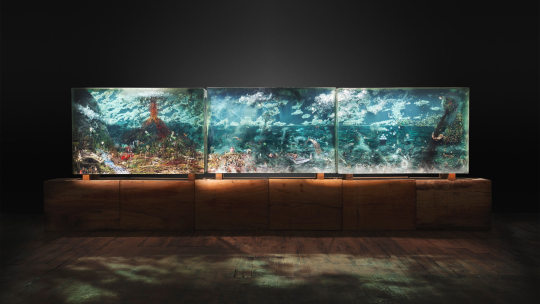
Dustin Yellin’s “The Triptych”
For a detailed video montage: https://www.youtube.com/watch?v=2mYqky99i_w
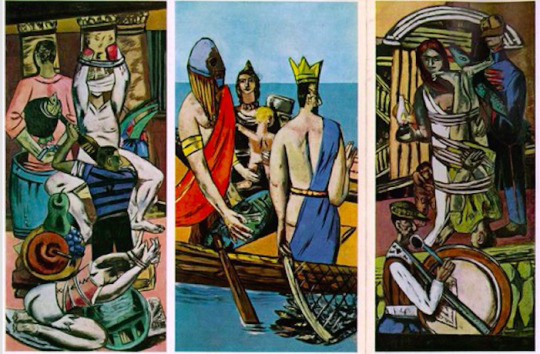
Max Beckmann “Departure” 1932-33 Oil on canvas Triptych, center panel 84 ¾ X 45 3/8”; side panels each 84 ¾ X 39 1/4” The Museum of Modern Art, New York
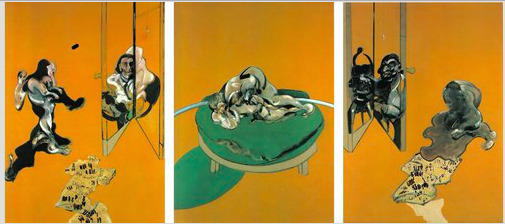
Francis Bacon, Three studies of the male back triptych 1970, Oil on canvas, each 198x147.5cm Kunsthaus Zürich, Vereinigung Zürcher Kunstfreunde
Student Examples
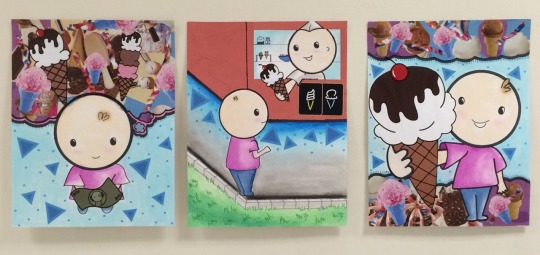
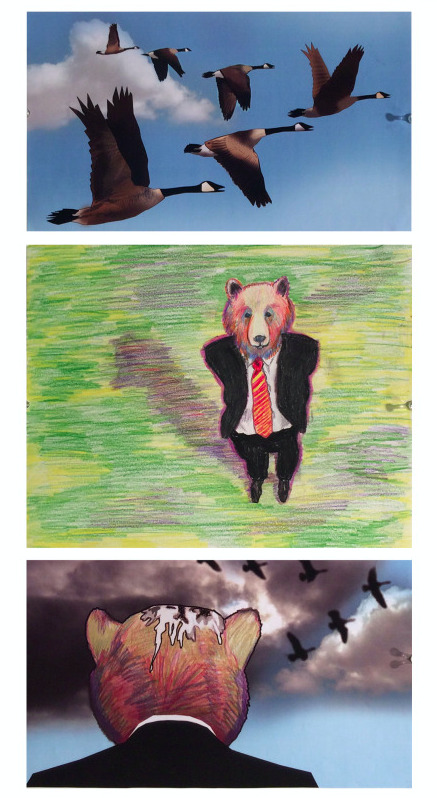
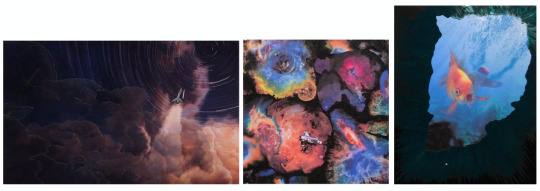


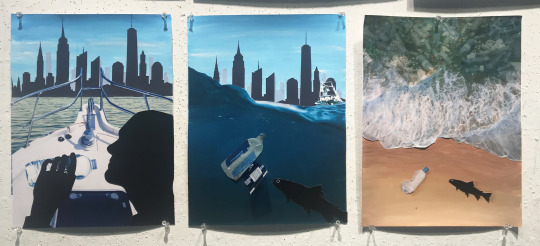
3 notes
·
View notes
Text
CHARACTER ARCHETYPES
Characters are a central part of any short story, novel, screenplay, or stage play - they drive the conflict and provide the point of view for the story, the audience watched unfold.
if you want to talk about character design, I think its pretty apparent you need to have at least a basic understanding of what makes a believable, and engaging character.
and in order to understand that, you’ve got to analyse what makes a character... well... a character.

with so many characters across so many different forms of media - there’s bound to be intertwining aspects of character, that crossover with one another:
we as humans share plenty of personality traits, its not unlikely that theres a set of ‘default settings’ that pretty much everything can be broken down to
yep - there is. otherwise i wouldn't be writing this post.
There are many ways to categorise characters A character can also often fit into more than one category or move through categories.
it’s my duty, in this post, to introduce you to some generic character types you might find across your own media consumption~ and as such, hopefully after reading this you’ll be able to analyse and break down pretty much any character driven piece, with these principles:
THE FIVE FACTOR MODEL - “PERSONALITY IS A SPECTRUM”
The “Big Five Model”, also known as the Five-Factor Model, is the most widely accepted personality theory held by psychologists today.
The theory states that personality can be boiled down to five core factors, known by the acronym ‘CANOE’ or ‘OCEAN’:

The Big Five personality traits are extroversion, agreeableness, openness, conscientiousness, and neuroticism.
Each trait represents a continuum.
Individuals can fall anywhere on the continuum for each trait.
The Big Five remain relatively stable throughout most of one’s lifetime.
They are influenced significantly by both genes and the environment, with an estimated heritability of 50%.
They are also known to predict certain important life outcomes such as education and health.
the Big Five Model asserts that each personality trait is a spectrum. Therefore, individuals are ranked on a scale between the two extreme ends.

For instance, when measuring Extraversion, one would not be classified as purely extroverted or introverted, but placed on a scale determining their level of extraversion.
By ranking individuals on each of these traits, it is possible to effectively measure individual differences in personality.

- The Personality System, from “Tomodachi Life”, Nintendo (2013): as a visual relative comparison to how the five factor theory works
ROUNDED AND FLAT CHARACTERS - “ADDING LAYERS OF DIMENSION”
Characters can be either round or flat.
A round character is nuanced and well thought-out. They usually play an important role in the story, and are written specifically so audiences can pay attention to them for a specific reason.
Flat characters, on the other hand, are more like window dressing. They are two-dimensional, lack nuance, and their purpose in a story is usually perfunctory.
FLAT CHARACTERS
A flat character is a two-dimensional character lacking depth or a real personality - with little to no complex emotions, motivations, or personality. They also don't undergo any kind of change to make them more well-rounded. In other words, they're the opposite of a "round character," who has a fully fleshed out profile and changes throughout the story.

Usually, flat characters have just one or two perfunctory traits. Often considered “stock characters,” flat characters can often be summarized in one word (like “bully” or “love interest”) and never digress from or transcend their role.
A good story needs to have a balance of round and flat characters.
Flat characters still need to serve a specific purpose to propel the story forward in some way.
ROUNDED CHARACTERS
A round character is a deep and layered character in a story, complex with many different characteristics.

Round characters are interesting to audiences because they feel like real people; audiences often feel invested in these characters’ goals, successes, failures, strengths, and weaknesses.
Round characters are fully realised characters that come into conflict with each other and other characters in believable ways, spurring character development.
What Is the Difference Between Round and Flat Characters?
The biggest difference between round and flat characters is the character’s complexity:
round characters have layers, while flat characters do not.
These layers cause the round characters to be more interesting, meaning audiences can more easily sympathise with round characters as opposed to flat ones.
DYNAMIC & STATIC CHARACTERS - “CHANGE-IS-A-COMING”
Character quality has to do with what kind of character someone is. This doesn’t refer to their temperament, such as being nice or mean, but rather their nature within the story
Two essential types of characters to understand when writing an interesting story are dynamic characters and static characters.
DYNAMIC CHARACTERS
A dynamic character is a character who undergoes significant internal change throughout the course of a story.
The development of a dynamic character is often subtle and unstated and is not due to a change in the character’s circumstances. A dynamic character is one who learns a lesson or changes as a person (either for better or for worse). Most main characters and major characters in stories are dynamic.
The term “dynamic character” is often confused with “round character,” and while they often overlap, they are not the same.
A dynamic character is one who changes significantly throughout the story, whereas a round character is simply one who is interesting and layered. A character can be round without ever undergoing any changes throughout a story, so characters can be round without being dynamic.
STATIC CHARACTERS
A static character is a type of character who remains largely the same throughout the course of the storyline.
Their environment may change, but they retain the same personality and outlook as they had at the beginning of the story. It’s common for secondary characters in stories to be static.
Static characters are the opposite of dynamic characters; while static characters stay the same throughout a story, dynamic characters undergo significant internal change.
Flat characters are often confused with static characters, and while they are related, they are different concepts. Where a flat character is one that is two-dimensional, a static character is one that doesn’t change throughout the course of the story.
Most flat (uncomplex) characters are static (unchanged by the end of the story), but not all static characters are flat.
THE 12 ARCHETYPES - “ORIGINAL PATTERNS OF THE HUMAN PSYCHE”
For thousands of years, narrative artforms have featured archetypes—characters built on a set of traits that are specific and identifiable.

What Is an Archetype?
An archetype is an emotion, character type, or event that is notably recurrent across the human experience. In the arts, an archetype creates an immediate sense of familiarity, allowing an audience member to relate to an event or character without having to necessarily ponder why they relate.
CHARACTER ROLES IN A STORY - “PLACING PEOPLE INTO CATEGORIES, BUT NOT LIKE THAT I SWEAR”
when consuming character-driven media; an audience should be able to tell, while watching, who in the story is the hero, the villain, etc.
directing and writing characters becomes easier, with knowledge of the theories behind character conventions - and we’ve covered a fair few, over the course of this blog post: so
PROTAGONIST :
every good story needs someone to follow, and a protagonist is exactly that.
“A protagonist is the main character of a story. the leading character, who makes key decisions that affect the plot, primarily influencing the story and propelling it forward”

all other roles are defined in relation to the protagonist as most of the action centres around them, and they’re the one we’re meant to care about the most.

although the protagonist is usually the hero of the story however, especially recently, this trope has been twisted and experimented with to death - by showcasing the story of a villain triumphing over good.
ANTI-HEROES & ANTI-VILLAINS
Most of the time, the protagonist is good and the antagonist is evil, and such is the source of their conflict. This isn’t always the case - especially if the protagonist is an anti-hero who lacks typical heroic attributes, or the antagonist is an anti-villain who has noble characteristics. Still, 95% of the time, the protag is the hero and the “antag” is the villain.
ANTAGONIST :
“a person who actively opposes or is hostile to someone or something; an adversary.”
If you’re an antagonist, you antagonise.

Specifically, you undermine, thwart, battle, or otherwise oppose the protagonist.
there’s an infinite number of iconic matchups, between characters that could effectively explain this concept:
Kirby vs. MetaKnight, Samus Aran vs. Ridley, Homer Simpson vs. Peter Griffin
but to better get my point across, to an audience I figured it would beneficial for me to explain the concepts of Protagonists and Antagonists using two of the most famous rivals of all time
Mario and Bowser, as the two are clear representatives, of this theme:

Mario wants to rescue Princess Peach, from the clutches of her kidnapper - and Bowser is the one who keeps kidnapping her.
their motives completely oppose one another.
you control Mario - the story is told from his perspective, making him the protagonist of the story.
he’s the hero, he’s the one with the goal: he has to rescue his love interest from King Koopa.
Bowser is trying to stop Mario, and therefore you from reaching your goal -
therefore in the formulaic story: he is the antagonist. the character in a story who is presented as the chief foe. The one stopping the protagonist.
DEUTERAGONIST :
“The deuteragonist is the secondary character, right behind the protagonist in importance.”
Most stories have a primary protagonist and a secondary deuteragonist (or group of deuteragonists). This is the character who’s not exactly in the spotlight, but pretty close to it.

The deuteragonist’s comic book equivalent would probably be the sidekick. They’re often seen in the company of the protagonist: giving advice, plotting against their rivals, and generally lending a helping hand.
Their presence and close relationship to the protagonist gives the story warmth and heart, so it’s not just about the hero’s journey, but about the friends they make along the way.

Of course, not all secondary figures are friends — some are arch-enemies — but even these less-friendly deuteragonists still lend depth to a story.
The deuteragonist may be on the protagonist's side: for example, a love interest or sidekick. Or the deuteragonist can be a villain, like the protagonist's main rival.
point being: they’re the secondary main character, the second most important character, after the protagonist and before the tritagonist.
TERTIARY :
Tertiary characters, simply put, are the third most important characters in a story.
They’re usually the ones that pop up in one or two scenes, say one or two lines, then they are gone. that does not mean they aren't important... just less so than the protagonist and deuteragonist!

However, a well-rounded story still requires a few tertiaries.
We all have them in real life, after all!
the barista you only see once a week, the random guy you sit next to in class, so any realistic fictional story should include them too.
(The reason that tertiary characters aren’t called “tertagonists” is because they’re not important enough to really agonise anything or anyone.)
MCGUFFIN CHARACTER
a McGuffin is an object, device, or event that is necessary to the plot and the motivation of the characters, but insignificant, unimportant, or irrelevant in itself.
a bit of an obscure character type i don't see get enough recognition, so I wanted to cover - although it’s specificity comes with a simplicity, that makes it difficult to write about..

Grogu is a classic example of a McGuffin, as he’s a lil’ character that serves as the central driving force for the plot, of the Mandalorian - with the bounty hunter’s end goal being to return him home.
Grogu drives the plot forward, but Grogu in of itself a literal dumb stupid baby, who has to be brought there by the hunter.
LOVE INTEREST
“a character whose main role in a story or film is that of a lover of the central character.”
Most novels contain romance in one form or another. It might be the main plot, a subplot, or just a blip on the narrative radar - but there is usually an element of a relationship forming in most stories.

You’ll recognize a love interest by the protagonist’s strong reaction to them, though that reaction can vary widely.
Some love interests make their MC swoon; others make them scoff.
The protagonist often denies their feelings for this person at first, or vice-versa, which is a great plot-thickening device.
RIVAL
for rivalry, there's one example that instantly gets tossed into my head.

Ash Ketchum vs. Gary Oak
the Pokemon series has used this trope throughout pretty much every instalment of media: a rival is the volatile foe of the protagonist, who, through a series of inexplicable events gains grudging respect for said hero/heroine.
rival’s are primarily concerned with being stronger than the hero: they usually begin the series with a leg up on The Hero, which is often the catalyst for the hero's character development as their desire to best the rival inspires them to improve themselves. Often they show what the hero could have become if fate was just a little bit different.
this trope usually ends with the rival being beaten or them becoming stuck on their own journey, meeting someone who gives them a challenge, or worse subject him to an embarrassing defeat.
FOIL CHARACTER
“A foil character is someone whose personality and values fundamentally clash with the protagonist’s.”

Though these two often have an antagonistic relationship, the foil is not usually the primary antagonist.
Sometimes the MC and their foil clash at first, but eventually see past their differences to become friends.
The foil’s precise relationship to the protagonist depends on the differences between them. For example, if the Protagonist is kind and selfless and their foil is extremely self-serving, they’re probably not going to get along.
CONFIDANTE:
“a person with whom one shares a secret or private matter, trusting them not to repeat it to others.”
many stories focus so much on the love interest that other relationships get left out in the cold. However, the confidant can still be one of the most profound relationships the protagonist has.
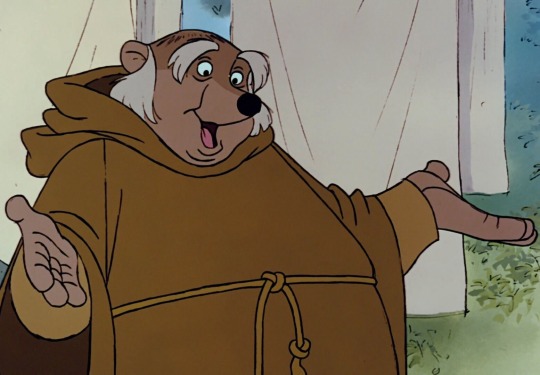
Confidants are often best friends, love interests, or even a mentor that the protagonist shares their thoughts and emotions with, even when they’re reluctant to share with anyone else.
for this role I like to think of Peter Parker - his secret identity as Spider-Man is something that he has expressed to people, and in turn he is able to open up about that part of himself.

I think this is most precedent with Andrew Garfield’s interpretation - where Peter Parker is able to express areas of self doubt in himself, as Spider-Man - that he wouldn't usually get to, with Gwen Stacy - as he confines in her, as the only one who he tells his identity as the web-slinger to.

However, the confidant might also be someone the protagonist turns to, not because they want to, but because they have no other choice..
in this regard think of the comedic scene where Ned Lees finds out Tom Holland’s interpretation of Peter is Spider-Man
FEMME-FATALE:
“A femme fatale, sometimes called a maneater or vamp, is a stock character of a mysterious, beautiful, and seductive woman whose charms ensnare her lovers, often leading them into compromising, deadly traps.”
The phrase is French for "fatal woman".
A femme fatale tries to achieve her hidden purpose by using feminine wiles such as beauty, charm, or sexual allure. this trope was most used in 60′s based media - such as bond films, and lupin iii

finally, to end things off - i threw in a bit of a strange one. which is rather fitting.
MANIC PIXIE DREAMGIRL:
“exists solely in the fevered imaginations of sensitive writer-directors to teach broodingly soulful young men to embrace life and its infinite mysteries and adventures."

a manic pixie dream girl is sort of a quirky girl, eccentric and fantasy orientated who saves the male protagonist from harm.
they’re described as a stock character who have eccentric personality quirks and are unabashedly girlish. that has no discernible inner life, usually existing for the sole purpose of providing the protagonist with important life lessons.
They invariably serve as the romantic interest for a (most often brooding or depressed) male protagonist.
0 notes